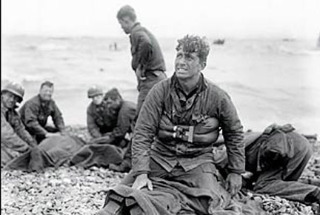
D-Day – 6 June 1944 – is often referred to as the most crucial day in the history of the Second World War, and even as the last, greatest military operation of its kind. After years of intricate planning, early that morning over 160 000 troops crossed the English Channel to storm four Normandy beaches. From that lodgement – reinforced by hundreds of thousands more men and tons of equipment over coming months – those forces led the Allied invasion of Europe. Preceded by massive naval and aerial bombardment, and overnight by the landings of 24 000 airborne troops, ‘Operation Overlord’ was in itself a triumph in logistics, let alone in its crucial contribution to ending the war against Nazism. That victory in Europe would only come nearly a year later, on 8 May 1945, underscores the significance of those landings in the long narrative of the war. And that larger perspective must inform an understanding of D-Day itself.
The preceding years of planning had been characterised by as much debate as resolution, as British and American officers wrangled over strategies, and more fundamentally over conflicting ways of war: attrition versus attack. Like a spectre, mired in incomprehensible suffering, the Eastern Front between the Soviet Union and Germany haunted these discussions. When would the Allies draw some of Hitler’s attention west? Since 1942 selected allied troops had been in training for all aspects of the campaign. As one Canadian infantry man recalled, ‘we were never dry’ in those interminable exercises. Royal Air Force’s Bomber Command argued that the terror of its aerial bombardment of German cities could ‘severe the artery’ of will and capacity more effectively than such cumbersome boots-on-the-ground. And as a child evacuated from London in 1940, John Keegan – later an eminent historian of the war – recalled that he ‘imagined some gigantic, climactic duel of aircraft, in which Spitfires without number would have overwhelmed the Germans first in the sky and then on the ground’. But watching the build-up of resources in southern England through the spring of 1944 – the endless convoys on country roads – the more primal facts of an invasion impressed itself on Keegan’s mind … and somehow faded in interest. The next phase of this most modern conflict, in its capacity for destruction, would revert to an older story: once again, the sheer grind of war.
Even so, the magnitude of assault necessary to ensure Overlord’s success – for there could scarcely be a Plan-B – required everything that the networks of intelligence, decryption, deception and sabotage cultivated during the war could deliver. An allied invasion was regarded by German officials as inevitable, but its keeping secret its final form rested on ingenuity, trust, chance, risk, and a myriad of lives and skills transacted at a much smaller scale of relationships than the events of D-Day themselves suggests. The ‘triumph’ of 6 June 1944 sits on the shoulders of the kind of mobilisation – civilian and military, passionate and pragmatic, efficient and profligate, but always fundamentally personal – that marks all that the Second World War represents.
The landings in June have produced powerful images, but they always need these contexts. Stephen Spielberg’s Saving Private Ryan (1998) – centring on D-Day – opted for graphic realism in capturing the experience of the ‘common soldier’ struggling from the beaches, with an effect aspiring to a kind of a mythic fable. The film was remarkably successful, but its critics have seen it seeking to redeem the American ideal of ‘the good war’ from shadows cast by the Vietnam and, more proximately, the Gulf wars. As president, Ronald Reagan echoed on the 40th anniversary of the landing US General Omar Bradley’s tribute that ‘every man who set foot on Omaha Beach that day was a hero’. That triumphalism still rankles with those who want the bigger, and smaller, picture. Like so much of the Second World War, it is not what happened but – as John Keegan came to insist – how such conflict was possible that demands our attention.
Dr Nicholas Brown is a Senior Research Fellow in the School of History